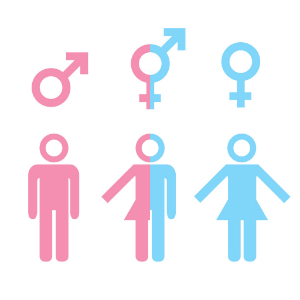Sexual orientation is a term that is related to the different forms of affective and sexual attraction for each one.
This concept came to replace that of “sexual choice” since people do not choose their orientation, that is, they develop their sexuality throughout life. In this sense, a person does not choose to be heterosexual or homosexual.
Types
Depending on sexual and affective attraction, sexual orientation is classified into three types:
- heterosexual or heteroaffective: when a person is attracted to a gender different from their own.
- homosexual or homoaffective: when attraction occurs between people of the same gender. In this category are lesbians (attraction and relationships between women) and gays (affection and attraction between men).
- Bisexual or biaffective: when the person is attracted to both genders: female and male.
Note: In addition to this categorization, there are also asexuals, that is, those who are not interested in and are not attracted to any of the genders.
Gender Identity

Gender is a term that corresponds to the individual's biological sex, which is classified in two ways: female and male. Intergenres, on the other hand, do not identify with any of the genres.
Gender identity is a concept that is related to the feeling that someone has about themselves, regardless of their anatomy.
In this case, there are people who are born with a specific biological gender and do not identify with it. As an example, we have transgenders or transsexuals. These individuals usually undergo sex-modifying surgery.
Different from them, there are transvestites, who also have an identification with the opposite gender to that of birth, but do not undergo sex change surgery.
For transvestites, there is a change in gender roles, that is, a change in the behavior that the person performs in society.
Curiosity
The acronym “LGBT” represents the movement of lesbians, gays, bisexuals, transvestites and transsexuals. It was replaced by “GLS” which excluded bisexuals, transvestites and transsexuals.
Sexual Orientation in Schools
The theme of sexual orientation began to be contemplated by the inclusion of the transversal theme in the school curriculum since 1997.
This theme is part of the National Curriculum Parameters (PCN's):
“When dealing with the topic of Sexual Orientation, we seek to consider sexuality as something inherent to life and health, which is expressed in human beings, from birth to death. It is related to the right to pleasure and the exercise of sexuality with responsibility. It encompasses gender relations, respect for oneself and others and the diversity of beliefs, values and cultural expressions that exist in a democratic and pluralistic society. It includes the importance of preventing sexually transmitted diseases/AIDS and unwanted teenage pregnancies, among other controversial issues. It intends to contribute to the overcoming of taboos and prejudices still ingrained in the Brazilian sociocultural context.” (PCN, Sexual Orientation)
The main objective is to raise awareness among young people about issues related to sexuality. The relationship with the body, genders, sexual identity and sexually transmitted diseases (STD) stand out.
In the National Curriculum Parameters (PCN's) on Sexual Orientation, the objective of this theme is clear in the excerpt:
“The purpose of the Sexual Orientation work is to contribute so that students can develop and exercise their sexuality with pleasure and responsibility. This theme is linked to the exercise of citizenship insofar as it proposes the development of respect for oneself and the other and contributes to guaranteeing rights basic to all, such as health, information and knowledge, fundamental elements for the formation of responsible citizens aware of their capabilities.”
This proposal came up against the problems of discrimination and violence that many people have suffered, for example, the homophobia. This is the prejudice of some people towards homosexuals.

Illustration with a summary of the concepts of gender identity, sexual orientation and biological sex
Did you know?
Until 1990, homosexuality was considered a disease. That year, she was removed from the list of pathologies by the World Health Organization (WHO).
Previously, the term to refer to desire between people of the same sex had as a prefix the indicative of illness -ism (homosexuality). Today, it is considered inappropriate and in its place was the -ity (homosexuality).
Read too:
- Sexuality
- Homosexuality
- STD - Sexually Transmitted Diseases
- Teenage pregnancy

